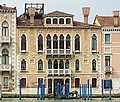
The Patriarch of Venice is the ordinary bishop of the Archdiocese of Venice. The bishop is one of only four patriarchs in the Latin Church of the Catholic Church. The other three are the Patriarch of Lisbon, the Patriarch of the East Indies and the Latin Patriarch of Jerusalem. Presently, the only advantage of this purely formal title is the bishop's place of honor in papal processions. In the case of Venice, an additional privilege allows the patriarch, even if he is not a cardinal, the use of the colour red in non-liturgical vestments. In that case, the red biretta is topped by a tuft, as is the custom with other bishops who are not cardinals.

Leonardo Loredan was a Venetian nobleman and statesman who reigned as the 75th Doge of Venice from 1501 until his death in 1521. As a wartime ruler, he was one of the most important doges in the history of Venice. In the dramatic events of the early 16th century, Loredan's Machiavellian plots and cunning political manoeuvres against the League of Cambrai, the Ottomans, the Mamluks, the Pope, the Republic of Genoa, the Holy Roman Empire, the French, the Egyptians and the Portuguese saved Venice from downfall.

The Barbaro family was a patrician family of Venice. They were wealthy and influential and owned large estates in the Veneto above Treviso. Various members were noted as church leaders, diplomats, patrons of the arts, military commanders, philosophers, scholars, and scientists.

Sebastiano Venier was Doge of Venice from 11 June 1577 to 3 March 1578. He is best remembered in his role as the Venetian admiral at the Battle of Lepanto.
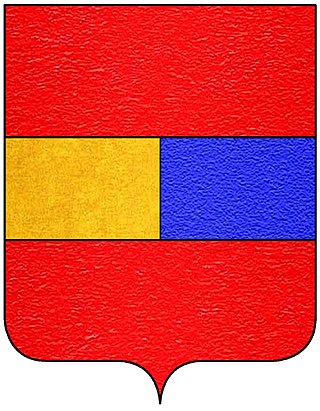
Balbi is the surname of the ancient noble Roman Family of Balbi where after the fall of the Western part of the Roman Empire and during the middle ages expanded in Venice, Genoa, Constantinople, Greece, Spain, Germany, Malta and other places. Balbi is one of the few surnames that has remained unchanged over the centuries and was one of the most famous prominent and wealthy families in Italy. Members of the Balbi family held high rank positions and noble titles such as Patrician, Senators, Dukes, Doge, Barons, Marchese, Lords e.t.c in the Maritime Republics of Venice and Genoa, the Eastern Roman and Holy Roman Empire of the German Nation, enganed in piracy, maritime trade, stock market and war activities where acquired wealth and power. Later in history many Balbi's participated in historical events such as revolutions, battles or served as Generals, Members of Parliament and Prime Ministers in many countries.

San Francesco della Vigna is a Roman Catholic church in the Sestiere of Castello in Venice, northern Italy.
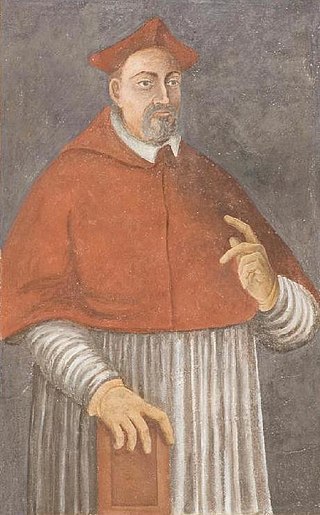
Francesco Pisani was an Italian Cardinal, born in Venice, the son of Alvise Pisani the noted banker, who was Procurator of S. Mark's, a member of the Council of Ten, and a Councilor of the Doge of Venice; and Cecilia Giustinian. He had a brother named Giovanni (Zuan), who also became Procurator of S. Marks' and was a Venetian diplomat; he was married to the sister of Doge Andrea Gritti. He was a strong supporter of the alliance between Venice, France and the Papacy, called the League of Cognac. He shared the imprisonment of Pope Clement VII in the Castel S. Angelo during the Sack of Rome and its aftermath. He spent eighteen months in exile in Naples while Clement made his peace with the Emperor Charles V.

The House of Loredan is a Venetian noble family of supposed ancient Roman origin, which has played a significant role in shaping the history of the entire Mediterranean. A political dynasty, the family has throughout the centuries produced a number of famous personalities: doges, statesmen, magnates, financiers, diplomats, procurators, military commanders, naval captains, church dignitaries, and writers.

Alvise Contarini was the 106th Doge of Venice from his election on 26 August 1676 until his death in 1684. He was the eighth and final member of the House of Contarini to serve as Doge of Venice.

The House of Venier was a prominent family in the Republic of Venice who entered the Venetian nobility in the 14th century.
This article presents a detailed timeline of the history of the Republic of Venice from its legendary foundation to its collapse under the efforts of Napoleon.
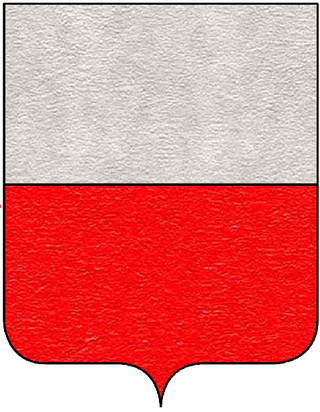
The House of Dandolo was a patrician family of the Republic of Venice, which produced four Doges of Venice. The progenitor of the family was a merchant named Domenico. The family became more successful by the beginning of the 12th century.

The House of Tron was a noble family of Venice whose most prominent member, Nicolò Tron, served as the Doge of Venice from 1471 to 1473. Other members of the family served as procurators, senators, generals and ambassadors of the Venetian Republic.
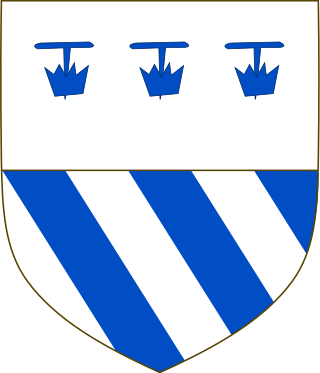
The Moro family was a patrician family of the Republic of Venice.
This is an alphabetical index of people, places, things, and concepts related to or originating from the Republic of Venice. Feel free to add more, and create missing pages.
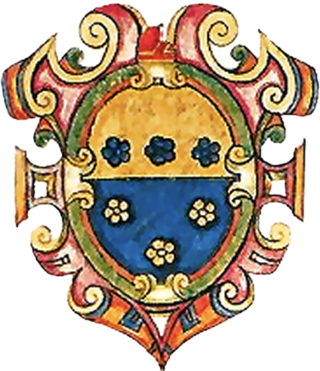
The House of Loredan-Santo Stefano was a cadet branch of the House of Loredan that existed from the 14th century until 1767. The branch was mainly settled in the Palazzo Loredan in Campo Santo Stefano, which they acquired in 1536 from the Mocenigo family. The progenitor of the branch is considered to be Gerolamo Loredan "dal Barbaro" di S. Vitale (d.~1474), father of Doge Leonardo Loredan and Dogaressa Caterina Loredan. Besides Leonardo, the branch also gave Doge Francesco Loredan.
Loredan is a Venetian surname. The House of Loredan is an aristocratic Venetian family that included various doges of the Republic of Venice, and the surname is almost exclusively associated with the family. The surname most likely originated from the toponym Loreo, which itself originated from its Latin name Lauretum, meaning laurel. Another theory of the origin of the surname, though most likely legendary, is that it comes from the Latin epithet Laureati, given to ancestors of the Loredan family due to their historical glory in ancient Rome and the many victories they achieved in battles. The surname is spelled Loredano or Loredan in Italian, Lauredano or Lauredanus in Latin, and Lorentano (Λορεντάνο) in Greek, though it is also historically found as Lordas (Λορδᾶς) and Lordano (Λορδάνο). The feminine name Loredana, common in Italy and Romania, was likely inspired by the surname.
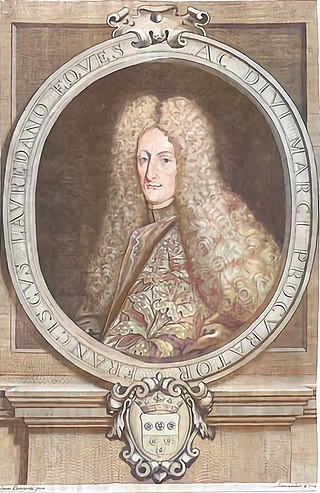
Francesco Loredan was a Venetian magnate and nobleman of the Loredan family, and an ambassador of the Republic of Venice to Vienna during the peace negotiations between the Ottoman Empire and the Holy League, which resulted in the Treaty of Karlowitz (1699).
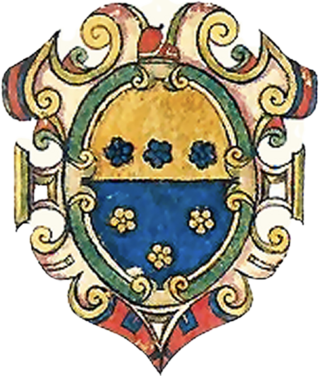
The House of Loredan-Santa Maria is a cadet branch of the noble House of Loredan which has produced many politicians, diplomats, military generals, naval captains, church dignitaries, writers and lawyers, and has played a significant role in the creation of modern opera with the Accademia degli Incogniti, also called the Loredanian Academy. The branch draws its name from the parishes of Santa Maria Formosa and Santa Maria dei Miracoli in Venice, around which it was historically settled. The progenitor of the branch is considered to be the famous admiral and procurator Pietro Loredan (1372-1438) by his sons Giacomo and Polo.
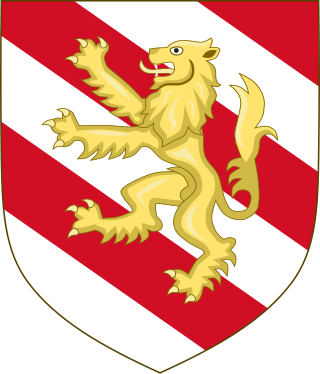
The Badoer were an aristocratic family in the Republic of Venice. The Badoer traced their ancestry, without any factual basis, to Doge Giustiniano Participazio in the early 9th century. In fact, they rose to prominence in the 13th century.
















